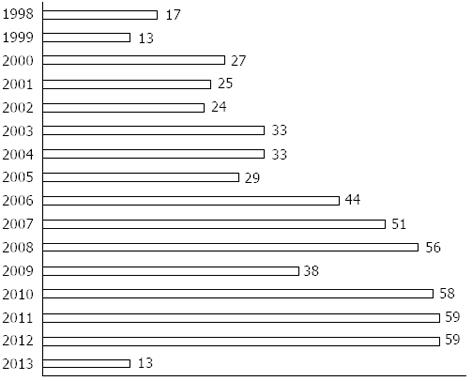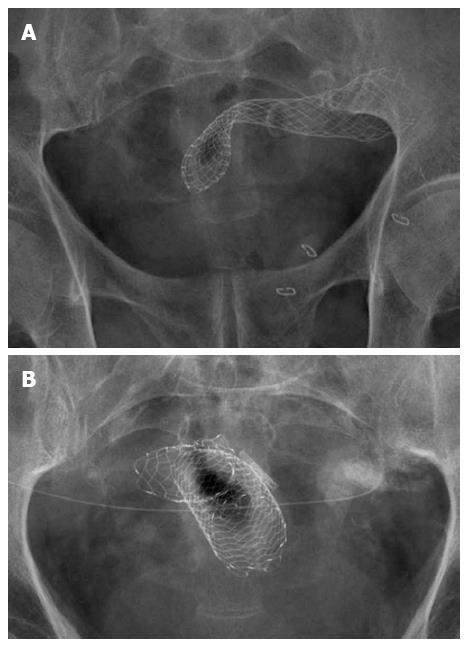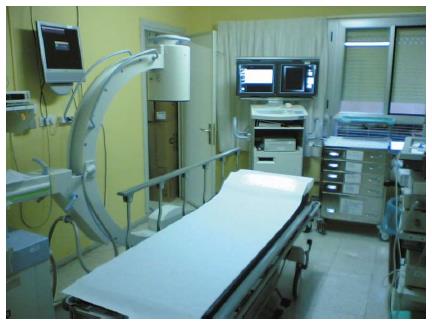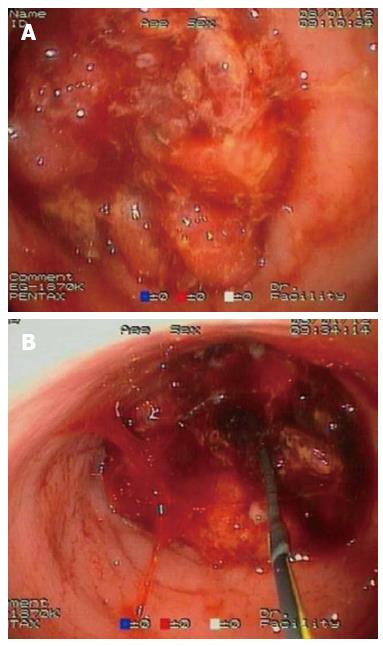Copyright
©2013 Baishideng Publishing Group Co.
World J Gastrointest Endosc. Oct 16, 2013; 5(10): 495-501
Published online Oct 16, 2013. doi: 10.4253/wjge.v5.i10.495
Published online Oct 16, 2013. doi: 10.4253/wjge.v5.i10.495
Figure 1 Number of scientific papers published in the last years about stents in tumoral colonic obstructions.
Search was done with the terms “colon and stent” in PubMed. Year 2013 ends in the month of March.
Figure 2 Ultraflex Precision stent from Boston Scientific.
This self-expanding metal stent is called over the wire because it cannot be inserted through the working channel of a therapeutic endoscope. Many other stent manufacturers have similar stents.
Figure 3 Wallflex (A) and Ultraflex (B) stents from Boston Scientific.
A: This self-expanding metal stent (SEMS) is called a through the scope (TTS) stent because it can be inserted in the folded way through the working channel of a therapeutic endoscope. Many other stent manufacturers have similar stents; B: Ultraflex Precision inserted in a tumoral stricture in the sigmoid, a hemostatic clip was placed to mark the lower part of the stricture. Despite the strange configuration due to sigmoid bends, the stent was in correct position; the patient had an abdominal catheter for hydrocephaly decompression.
Figure 4 C-arms fluoroscopic devices used sometimes for endoscopic retrograde cholangiopancreatography are not good for colonic stenting unless they have capacity to image the entire abdomen and if the patient table cannot be easily moved.
Figure 5 Endoscopic retrograde cholangiopancreatography catheter loaded with a hydrophilic tip guidewire.
A: the obstructive tumor appears not to have any orifice that enabled stenting; B: gentle probing of the tumor with the guidewire leads to finally finding the path.
- Citation: García-Cano J. Colorectal stenting as first-line treatment in acute colonic obstruction. World J Gastrointest Endosc 2013; 5(10): 495-501
- URL: https://www.wjgnet.com/1948-5190/full/v5/i10/495.htm
- DOI: https://dx.doi.org/10.4253/wjge.v5.i10.495













